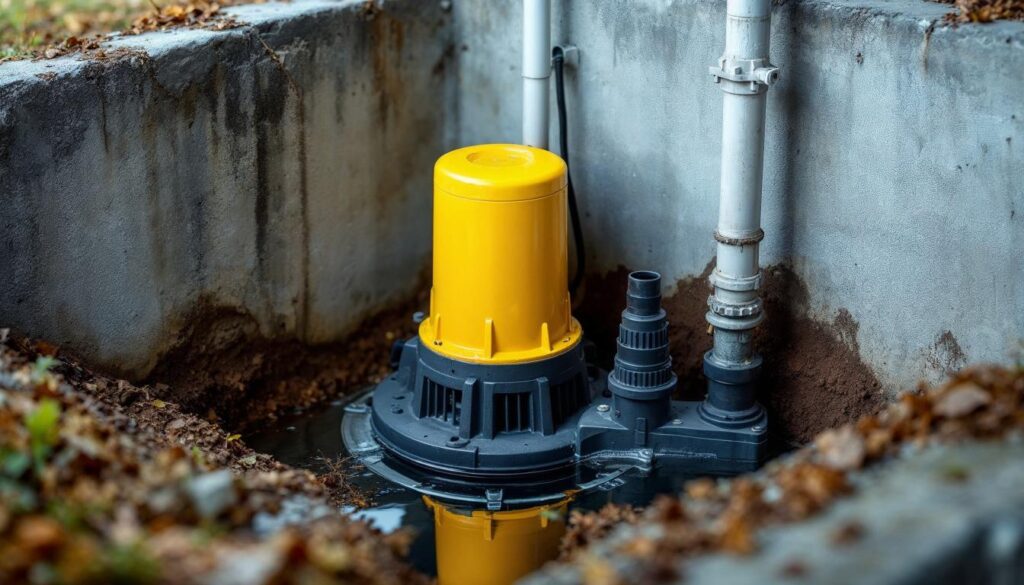
Contents
Understanding the most effective water extraction solutions is essential for minimizing these impacts. From advanced techniques to specialized equipment, it’s important to know what options are available to protect your assets and ensure a safe environment. What steps will you take to safeguard your business?
Key Takeaways
- Professional water extraction services quickly mitigate structural damage and health risks, ensuring a safe environment for employees and clients.
- Advanced techniques like vacuum extraction and dehumidification effectively remove water and prevent mold growth.
- Thermal imaging and infrared moisture meters help identify hidden moisture, ensuring thorough assessments and tailored remediation plans.
- Regular inspections and antimicrobial treatments during extraction are essential for ongoing mold prevention and maintaining a safe property.
- Understanding cost factors, such as service type, damage extent, and equipment use, aids businesses in making informed decisions for water extraction needs.
Importance of Professional Water Extraction for Businesses
When water damage strikes your business, it’s vital to act quickly, as prolonged exposure can lead to severe structural issues and health risks. You might be tempted to tackle the problem yourself, but professional water extraction is significant for ensuring thorough and effective remediation.
Experts utilize advanced equipment and techniques to remove water efficiently, preventing mold growth and minimizing damage.
A professional team understands the complexities of various water sources, from clean to contaminated, and tailors their approach accordingly. They assess the situation thoroughly, helping you avoid costly repairs down the line.
Moreover, professional services often provide documentation and insurance support, giving you peace of mind during a stressful time.
By choosing experts, you’re not just protecting your property; you’re safeguarding your employees and clients, fostering a safe and welcoming environment.
In your community, reliable expertise builds trust, allowing your business to recover and thrive.
Types of Water Extraction Techniques
Numerous water extraction techniques are available, each designed to address specific types of water damage effectively.
You might encounter methods like vacuum extraction, which quickly removes standing water using powerful pumps. This technique is ideal for large spills or flood situations.
Another common method is dehumidification, where specialized equipment reduces moisture levels in the air, preventing mold growth and structural damage.
Additionally, you may find thermal imaging helpful in identifying hidden pockets of moisture that traditional methods could miss. This technique ensures you address all affected areas, promoting a thorough restoration process.
Lastly, absorbent materials, such as pads and mats, can be employed to soak up residual moisture from carpets and flooring.
Each approach has its strengths, and understanding these techniques empowers you to make informed decisions for your business.
Advanced Equipment for Efficient Water Removal
To effectively combat water damage, utilizing advanced equipment can greatly enhance your water removal efforts. High-powered pumps, for instance, quickly extract large volumes of water, considerably reducing the time you spend on recovery.
Dehumidifiers, particularly those with adjustable settings, help to remove moisture from the air, preventing mold growth and structural damage.
Infrared moisture meters can pinpoint hidden water sources, ensuring you address every affected area. Utilizing air movers accelerates drying and circulating air to speed up evaporation.
Investing in this technology isn’t just about efficiency; it’s about peace of mind. You’re not alone in this process. Many businesses face water damage, and having the right tools allows you to tackle these challenges head-on.
With the right equipment, you can protect your property and foster a safe environment for your team and customers. Embrace these advancements, and feel empowered in your efforts to restore your space.
Assessing Water Damage in Commercial Properties
When you’re faced with water damage in your commercial property, understanding the types of damage is vital for effective remediation.
Start with an initial assessment that identifies the source and extent of the water intrusion, as well as any affected materials.
This systematic approach helps you prioritize your response and minimize further loss.
Types of Water Damage
Water damage in commercial properties can manifest in various forms, each presenting unique challenges for assessment and remediation.
You might encounter clean water damage from burst pipes, which is often less hazardous but still requires prompt attention.
Then, there’s gray water damage, typically stemming from appliances containing contaminants that can pose health risks.
Finally, black water damage, originating from sewage or floodwaters, is the most severe and necessitates immediate professional intervention.
Understanding these types helps you prioritize recovery efforts effectively.
It’s crucial to address each type with urgency to minimize long-term impacts on your property and your business.
Knowing the specific nature of the water damage ensures you’re taking the right steps to safeguard your investment and well-being.
Initial Assessment Steps
Effective assessment of water damage in commercial properties typically unfolds in a series of critical steps.
You’ll want to ensure you’re thorough, as each step can reveal the extent of the damage and prevent further issues.
- Identify the source of water intrusion
- Evaluate the affected areas for visible damage
- Check for hidden moisture using specialized tools
- Document your findings with photos and notes
- Develop an actionable plan based on your assessment
The Role of Dehumidification in Water Extraction
Although many may overlook it, dehumidification plays a critical role in the water extraction process for businesses facing moisture-related challenges.
When water infiltrates your space, it’s not just about removing the liquid; it’s about managing the air’s humidity levels to prevent further damage. Dehumidifiers work by extracting excess moisture from the air, which helps speed up the drying process and reduces the risk of structural damage.
Implementing effective dehumidification strategies ensures that all affected areas dry thoroughly.
This is essential for maintaining the integrity of your assets and ensuring a safe environment for your employees and customers.
Mold Prevention Strategies During Water Extraction
Managing humidity levels through dehumidification is just one part of the equation when dealing with water damage.
Mold can develop rapidly, so implementing preventative strategies during water extraction is vital. You’ll want to address potential mold growth proactively to protect your space and ensure a safe environment.
Here are some essential mold prevention strategies:
Ensure thorough water extraction: Remove all standing water to reduce moisture.
Maintain proper ventilation: Open windows and use fans to circulate air.
Monitor humidity levels: Keep indoor humidity below 60% to inhibit mold growth.
Use antimicrobial agents: Apply mold-resistant solutions to treated areas.
Inspect regularly: Conduct routine checks for signs of mold or moisture.
Choosing the Right Water Extraction Service Provider
How can you ensure you choose the right water extraction service provider for your business? Start by evaluating their experience and expertise in handling similar situations. Look for providers with industry certifications and a solid track record.
Next, gauge their response time; you want a team that’s ready to act quickly to minimize damage.
Don’t underestimate the importance of customer reviews and testimonials. Reach out to past clients to measure their satisfaction and the level of support received during the process.
Make sure the provider uses advanced equipment and environmentally friendly techniques to protect your workspace and employees.
Lastly, trust your instincts. Choose a provider that communicates openly, addresses your concerns, and makes you feel valued.
This partnership will restore your space and foster a sense of security and belonging in your community.
Cost Considerations for Water Extraction Solutions
When selecting a water extraction service provider, understanding the cost implications is just as important as evaluating their qualifications.
You’ll want to ensure that you’re getting the best value for your investment, as costs can vary widely based on factors like service type, urgency, and equipment used.
Consider these key cost factors:
Service Type: Different extraction methods can come with varying price tags.
Extent of Damage: Larger or more severe water damage may require more resources and time.
Equipment Use: Advanced technology may incur higher costs but can enhance efficiency.
Labor Costs: Skilled technicians will charge more, but their expertise can save you money in the long run.
Follow-up Services: Ongoing maintenance or inspections may be necessary, adding to your total expenditure.
Final Thoughts
In your pursuit of pristine premises, prioritizing professional water extraction is essential. Swift and skilled services safeguard structures, ensuring safety and stability. By embracing advanced equipment and effective techniques, you can combat chaos caused by water damage. Don’t let moisture morph into mold; choose a reliable provider dedicated to delivering dynamic solutions. With the right approach, you’ll transform turmoil into tranquility, protecting your business and promoting a healthier environment for everyone involved.
Recent Posts
Your Trusted Guide to Flood Damage Repair
It’s essential to act quickly and methodically to mitigate any further issues from flood damage.
Comprehensive Flood Damage Repair Process Explained
Flood damage repair can seem like an insurmountable task, but it’s important to tackle it
What Is the Step-by-Step Flood Damage Repair Process?
When you face flood damage, evaluating the damage, extracting water, and drying the area are
